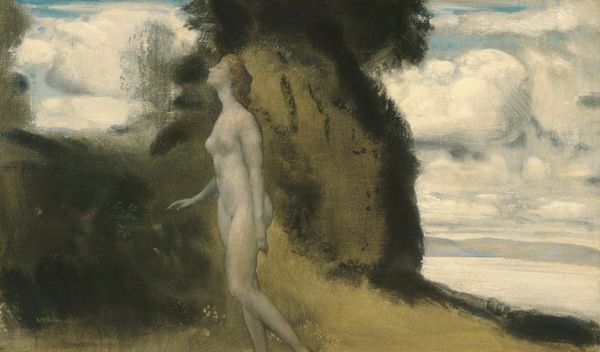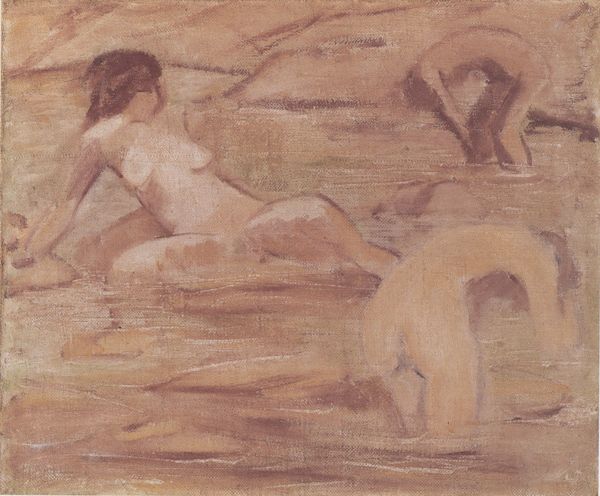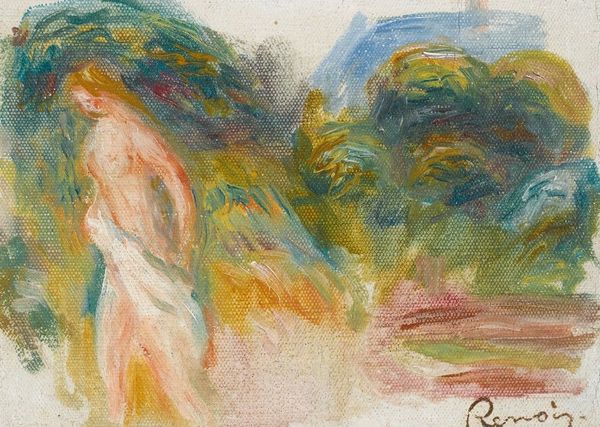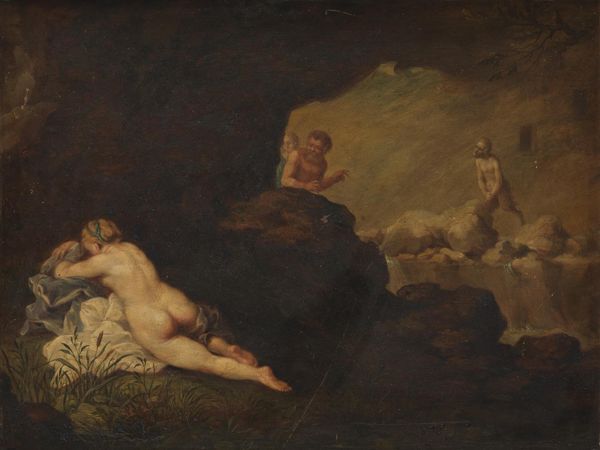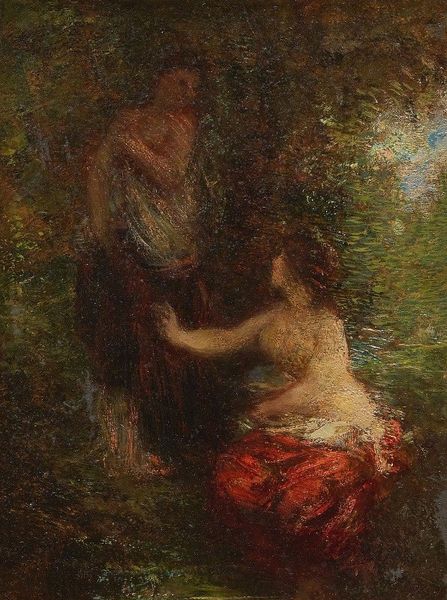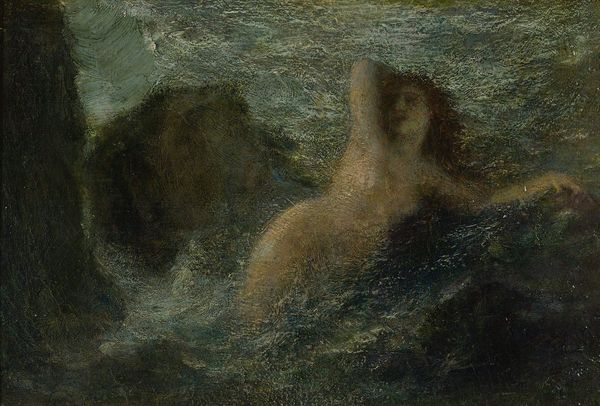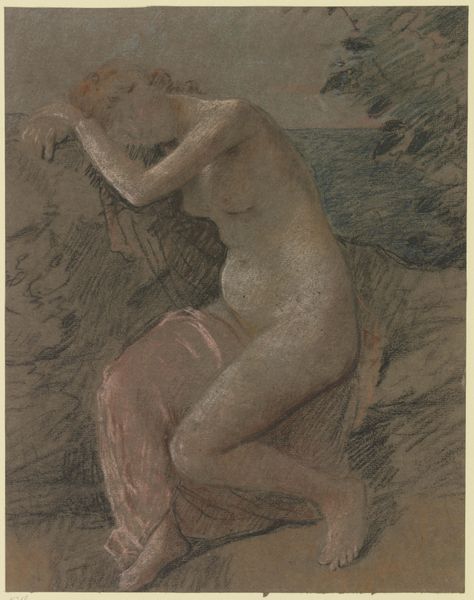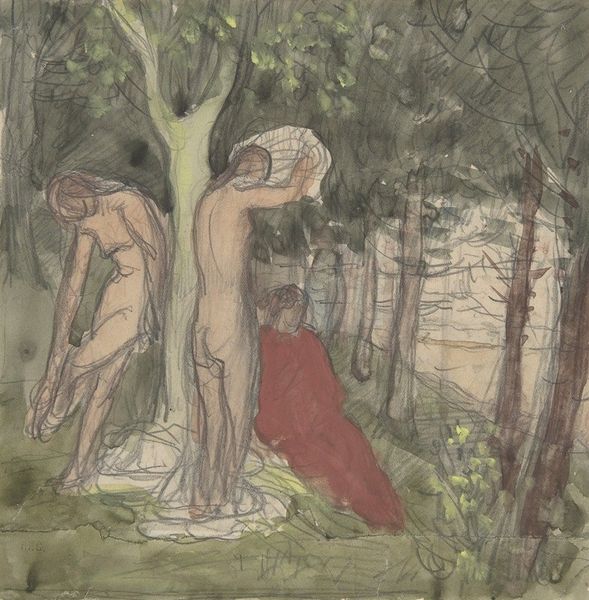
Dimensions: support: 168 x 276 mm
Copyright: CC-BY-NC-ND 4.0 DEED, Photo: Tate
Editor: So, this is Edward Calvert's "Elemental Life" from the early 19th century. The earthy tones create such a dreamy, almost ethereal mood. What do you see in this piece in terms of its representation of the natural world? Curator: The figures seem to exist outside the constraints of industrial society. I see a deliberate return to a more embodied and connected existence, rejecting the alienation that industrialization imposed on bodies, particularly female bodies, at the time. Editor: That's fascinating. So, it's more than just a landscape; it's a statement? Curator: Exactly. It's an argument for reclaiming the power of our bodies within nature, resisting societal forces. Do you think Calvert is successful in conveying that? Editor: I do. It encourages me to think about what I want my relationship to nature to be. Curator: And that's the power of art, isn't it? To make us question and reimagine our place in the world.
Comments
Join the conversation
Join millions of artists and users on Artera today and experience the ultimate creative platform.
tate 7 months ago
⋮
Calvert set out some of the principles which guided his art in an essay entitled 'The Four Phases of Life.' These were the Elemental, associated with Pan, God of the shepherds; the Simple, associated with Dionysius, God of wine, Ectasy and Fertility; the Mythic associated with Hermes, messenger of the Gods; and the Votive, associated with Phoebus, or the Sun, and which possessed a 'reverence for moral powers, of gods still higher.' This work illustrates the first of these, where Man 'finds himself in the midst of a beautiful order of things... revealed to his senses, and full of suggestiveness to his imagination of vital power contained therein.' Gallery label, September 1998


